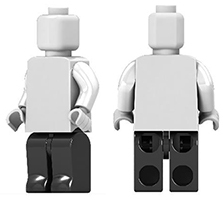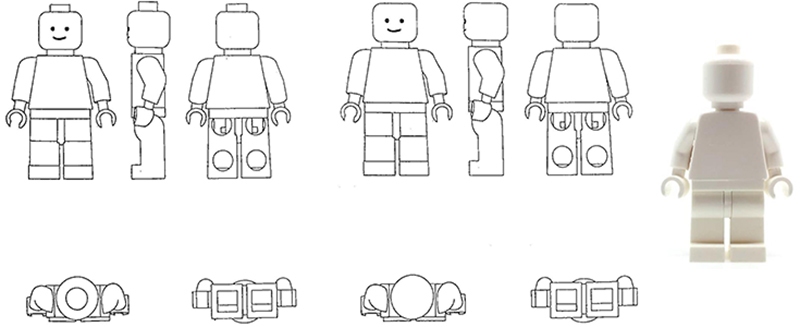Lego blocks out competitor’s invalid EU design registration
In a recent decision from the EUIPO, Lego has been successful in invalidating a competitor’s EU design registration relating to the iconic Lego figurine.
A copy of the invalidity decision, No. 104541, can be accessed via the EUIPO website (in French): https://euipo.europa.eu/eSearch.
The EU design registration whose validity was put into question, No. 003482520-0001, was applied for back on 25 November 2016. An image of the figurine protected by the EU design registration is reproduced below.

As is well-known, Lego figurines in accordance with this shape have been around for many years. Accordingly, in an attempt to invalidate the EU design registration, Lego sought reliance on several earlier disclosures relating to the shape of their figurines. These disclosures related to a mixture of EU trade marks belonging to Lego which predated the filing date of the EU design registration, as well as an Amazon listing depicting the shape of the Lego figurine which also predated the filing date of the EU design registration.

Assessment of invalidity
To establish whether the EU design registration should be invalidated, it was necessary for the EUIPO to consider whether the EU design registration exhibited both novelty and individual character over the earlier designs relied on by Lego.
In establishing whether or not individual character was present in the figurine depicted in the EU design registration, the EUIPO observed that the earlier designs relied on by Lego shared significant similarities with the figurine from the EU design registration. In that respect, both shared an identical shape of head, having a square shape with rounded corners and with a prominent cylindrical tip on the top. Furthermore, both shared the common forward folding of the arm and corresponding elbow portion, and both shared identical hands in the form of arches. The lower portion of the figurines also shared a very similar appearance - notably in relation to the space between the legs, and the openings shaped like a circle arranged at the back of each leg. Finally, it was observed that the earlier figurines shared the same overall proportions as the figurine depicted in the EU design registration.
The EUIPO did highlight some minor differences between the earlier figurines relied on by Lego and the figurine shown in the EU design registration. However, these differences were considered much less striking than the overall impression produced by the common characteristics of the figurines. This conclusion was reinforced by the very important freedom of the creator – which was not considered to be limited in the present case.
In the light of the overarching similarities between the various figurines, the EUIPO concluded that the EU design registration failed to create a different overall impression to those produced by the earlier designs of figurine relied on by Lego. Indeed, the contested design was deemed to reproduce almost identically the features of these earlier designs. Accordingly, the EU design registration was deemed to not exhibit individual character, and was therefore deemed to be invalid.
Having considered the EU design registration to not demonstrate individual character over the earlier designs relied on by Lego, it was not necessary for the EUIPO to additionally consider whether the EU design registration was itself novel over these earlier designs.
Commentary
The outcome of the invalidity decision is unsurprising, and is certainly a boost for Lego. The decision, however, highlights one of the potential pitfalls of the EU design registration system in that the EUIPO performs no substantive examination during the initial application process for any EU design registration. Accordingly, and as was the case here, it is very much possible for an EU design registration to exist on the register that is invalid on the basis of similar/well-known prior art that predates the EU design registration.
For further information in respect of the above, or in relation to design registration invalidity procedures before the EUIPO, please do not hesitate to contact one of the attorneys or solicitors in our design team.
